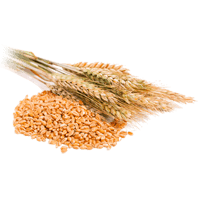Bulgur Glycemic Index (GI) - Is It High or Low?
Bulgur is a cereal food made from parboiled cracked wheat originating in the Middle East.
According to The International Tables of Glycemic Index, out of five different types of bulgur, four boiled bulgur samples from Canada had the same glycemic index number of 46. The fifth one had a GI of 53. The mean of these numbers makes the average GI of bulgur 47±1 (1).
50% of cracked wheat kernel (bulgur) bread from Canada has a GI of 58, while 75% has a lower GI of 48 (1). A Polish study found bulgur's glycemic index to be 64.5±23.7 (2).
Bulgur is most often classified as a low-glycemic-index food. For people with diabetes, it is advised to replace white rice, a high-glycemic-index food, with bulgur in dishes whenever possible. Bulgur can play an important role in a diet where a reduction in postprandial glycemia is required (3).
Whole grains possess evident anti-diabetic and anti-obese properties (4). Other research discusses increasing whole grain consumption for the prevention of type 2 diabetes (5). Also, a study shows that whole grain processing may manage spikes in blood glucose levels. Hence, bulgur, being a less-processed whole grain, may be beneficial for people with diabetes (6).
Please check our glycemic index chart page for more GI values.



